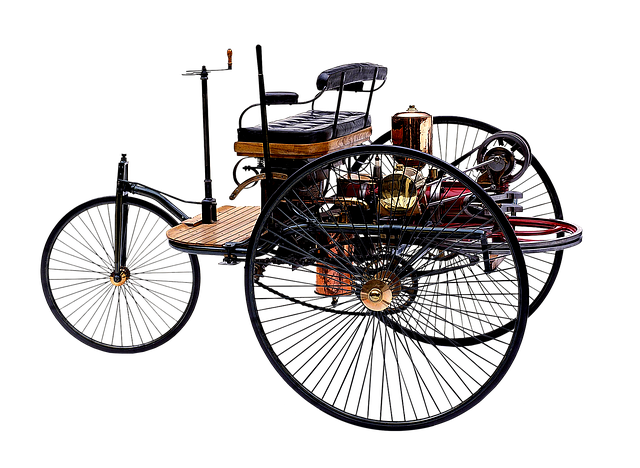“Unsure about registering your car in California? This comprehensive guide breaks down the process, ensuring a smooth experience. We’ll walk you through gathering essential documents, understanding your need for a DMV and VIN Verifier, and provide a step-by-step registration tutorial.
Learn from common mistakes to avoid delays. Whether you’re a first-time registrant or switching vehicles, this article is your key to navigating the California car registration maze with ease.”
- Understanding the California Car Registration Process
- Gathering Necessary Documents for Registration
- The Role of the DMV and VIN Verifier in Car Registration
- Step-by-Step Guide to Registering Your Vehicle in California
- Common Mistakes to Avoid During the Registration Process
Understanding the California Car Registration Process

Understanding the California Car Registration Process
Registering a car in California involves several steps that can seem daunting at first. However, with the right preparation and knowledge, it becomes a straightforward process. The first step is to ensure your vehicle meets all safety and emissions standards set by the state. This includes passing a smog test if required, which can typically be done at a local testing facility or through a mobile vin verifier service. Once your car has passed all necessary inspections, you’ll need to gather essential documents such as proof of ownership, insurance, and identification.
The next crucial step is visiting a California Department of Motor Vehicles (DMV) office or using their online services to complete the registration. Here, you’ll provide information about your vehicle, including its make, model, year, and unique Vehicle Identification Number (VIN). A mobile vin verifier can be particularly useful in this process as it allows for a quick and convenient way to confirm the VIN’s authenticity and history, ensuring everything is in order before submitting your registration.
Gathering Necessary Documents for Registration

Before you begin the registration process, ensure you have all the essential documents ready. The California Department of Motor Vehicles (DMV) requires a variety of information to verify ownership and complete the car registration. Key among these is the Vehicle Identification Number (VIN), which acts as a unique fingerprint for your vehicle. You can facilitate this verification process with a mobile vin verifier or visit a DMV office for an in-person vin inspection.
Gather official documents such as the title, which establishes legal ownership, and a valid driver’s license or state ID card. If you’ve recently purchased the car, you’ll need the bill of sale or purchase agreement. Additionally, proof of insurance is mandatory to show that your vehicle is covered while on California roads. These documents streamline the registration process at the DMV, making it quicker and more convenient for both new and existing vehicle owners.
The Role of the DMV and VIN Verifier in Car Registration

The Department of Motor Vehicles (DMV) plays a pivotal role in the car registration process in California. It is responsible for ensuring that all vehicles on the road meet safety and emission standards, and it facilitates the transfer of ownership and registration for vehicles within the state. The DMV requires several documents, including proof of insurance, vehicle inspection reports, and, crucially, accurate Vehicle Identification Number (VIN) data.
A VIN Verifier is an essential component in this process, often offering services like mobile vin verification or a vin inspection. These verifiers cross-check the provided VIN with reliable databases to confirm its authenticity, ensuring that the car is not stolen or has any outstanding issues. This step is crucial for both buyers and sellers to protect themselves from potential fraud, making the process of registering a car in California more secure and efficient.
Step-by-Step Guide to Registering Your Vehicle in California

Registering a car in California involves several straightforward steps, ensuring your vehicle is road-ready and legally permitted to operate within the state. Here’s a step-by-step guide to help you navigate the process smoothly. First, gather all essential documents, including your vehicle’s registration certificate (if it was previously registered), proof of ownership, and identification. Visit a California Department of Motor Vehicles (DMV) office or utilize their online services to initiate the registration process.
Once at the DMV, or using their website, you’ll need to provide details about your vehicle, such as its make, model, year, and unique Vehicle Identification Number (VIN). The DMV will verify this information, including conducting a VIN inspection through a trusted third-party service like a mobile VIN verifier to ensure the vehicle’s history is clear. After verification, you can complete the registration application, pay the required fees, and receive your California vehicle registration plates.
Common Mistakes to Avoid During the Registration Process

When registering your car in California, it’s important to be prepared and avoid common mistakes that can delay or even prevent completion of the process. One frequent error is failing to obtain a accurate and up-to-date Vehicle Identification Number (VIN) verification. This crucial step involves using a reliable source like a DMV VIN verifier or a mobile vin inspection service to ensure the vehicle’s history is clean and free from any red flags. Neglecting this critical initial check can lead to serious issues later, such as discovering hidden damage or undisclosed accidents on a used car.
Another mistake to steer clear of is not gathering all necessary documents beforehand. This includes proof of insurance, valid driver’s license, and registration from the previous state (if applicable). Additionally, some buyers might overlook having their vehicle inspected by a certified technician to ensure it meets California’s safety standards, which can cause delays at the DMV. Being proactive and addressing these aspects efficiently will make the registration process smoother and help you avoid potential headaches down the road.
Registering a car in California involves understanding the process, gathering essential documents, and collaborating with key entities like the DMV and VIN verifier. By following a step-by-step guide and avoiding common mistakes, you can ensure a smooth registration experience. Remember to stay organized, double-check your documents, and maintain accurate records for future reference. This will not only facilitate the registration process but also contribute to a seamless ownership journey in the Golden State.
